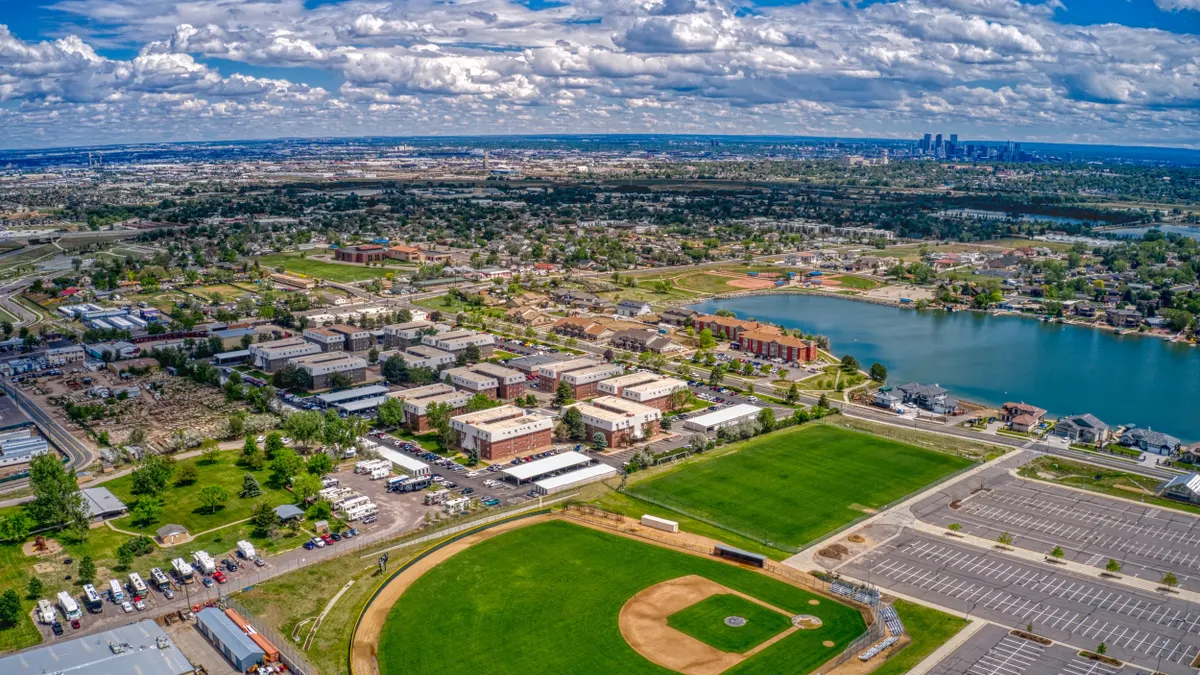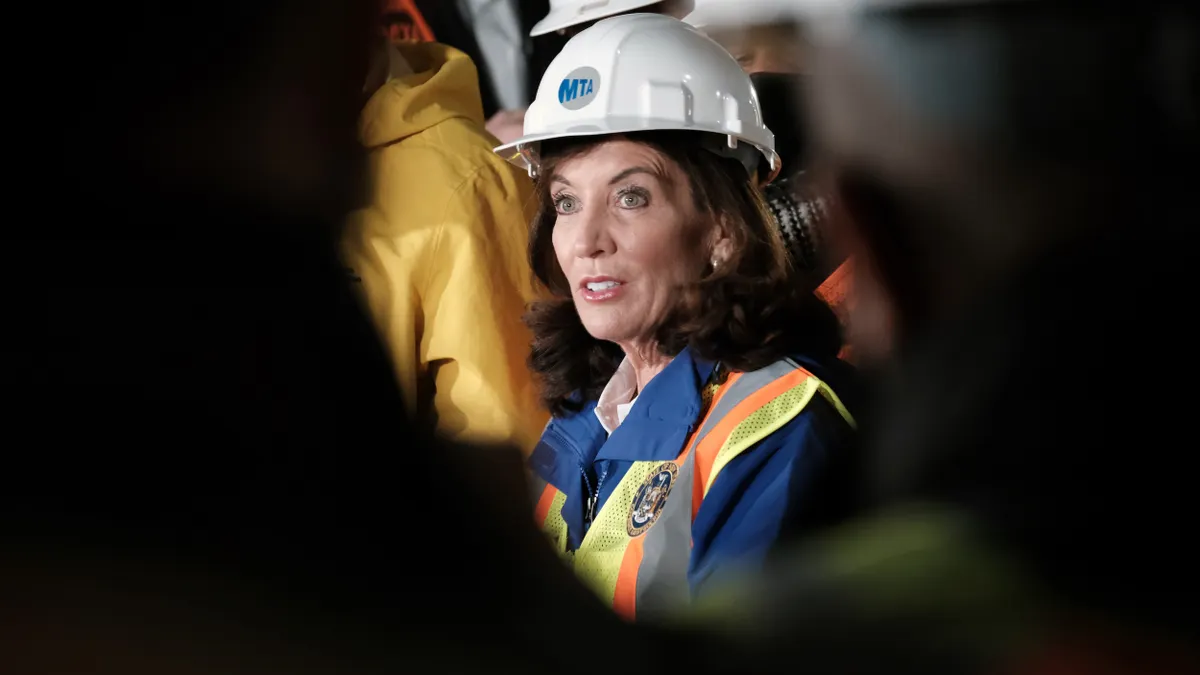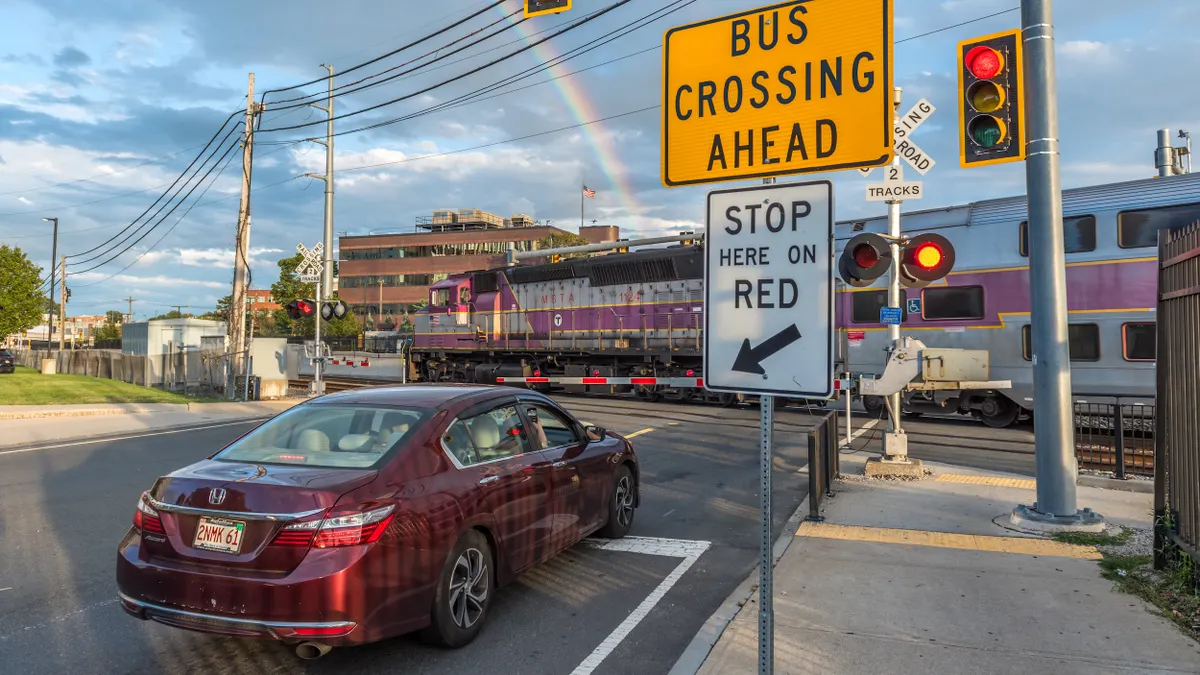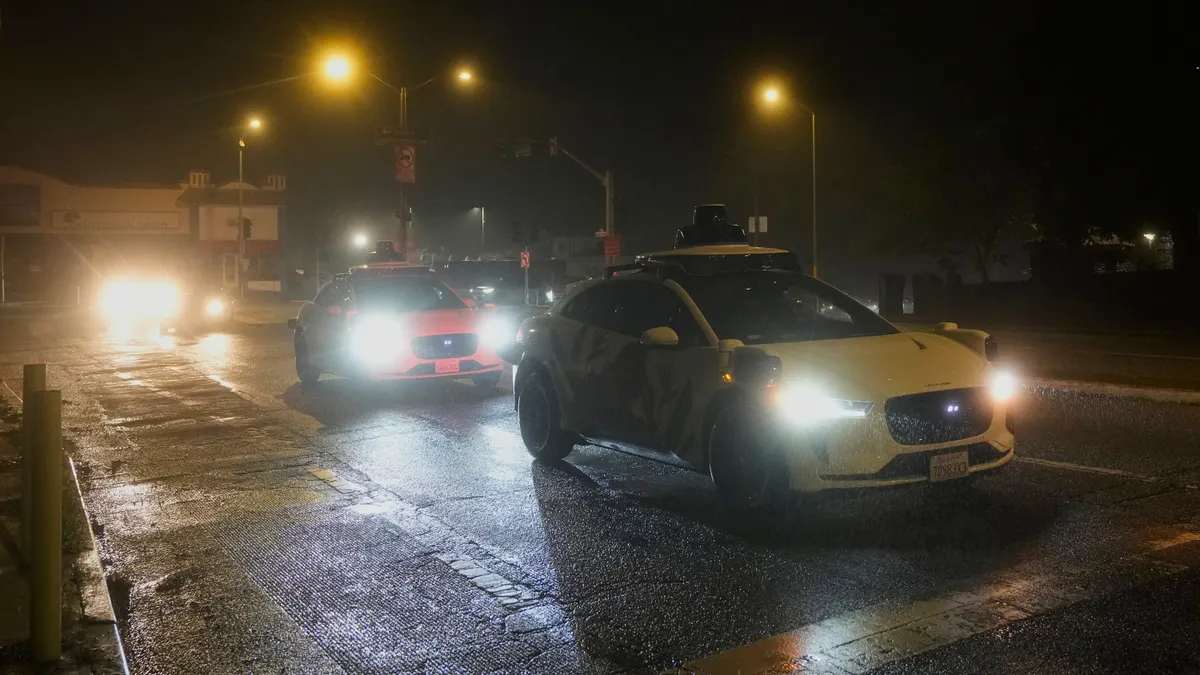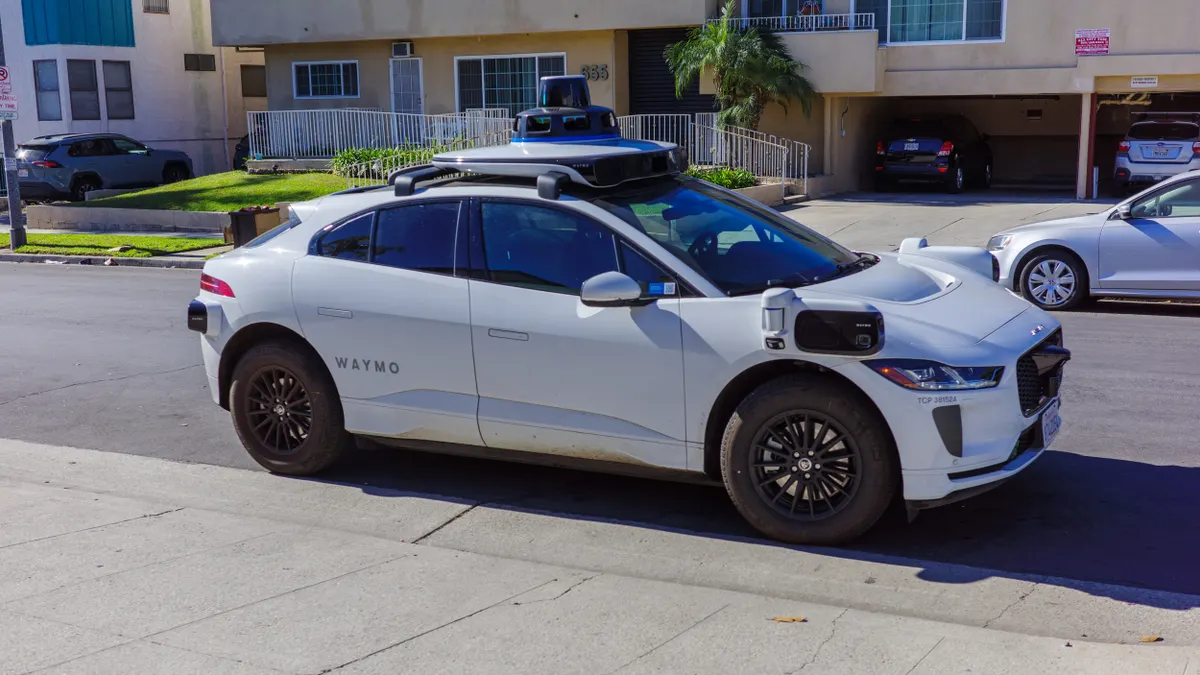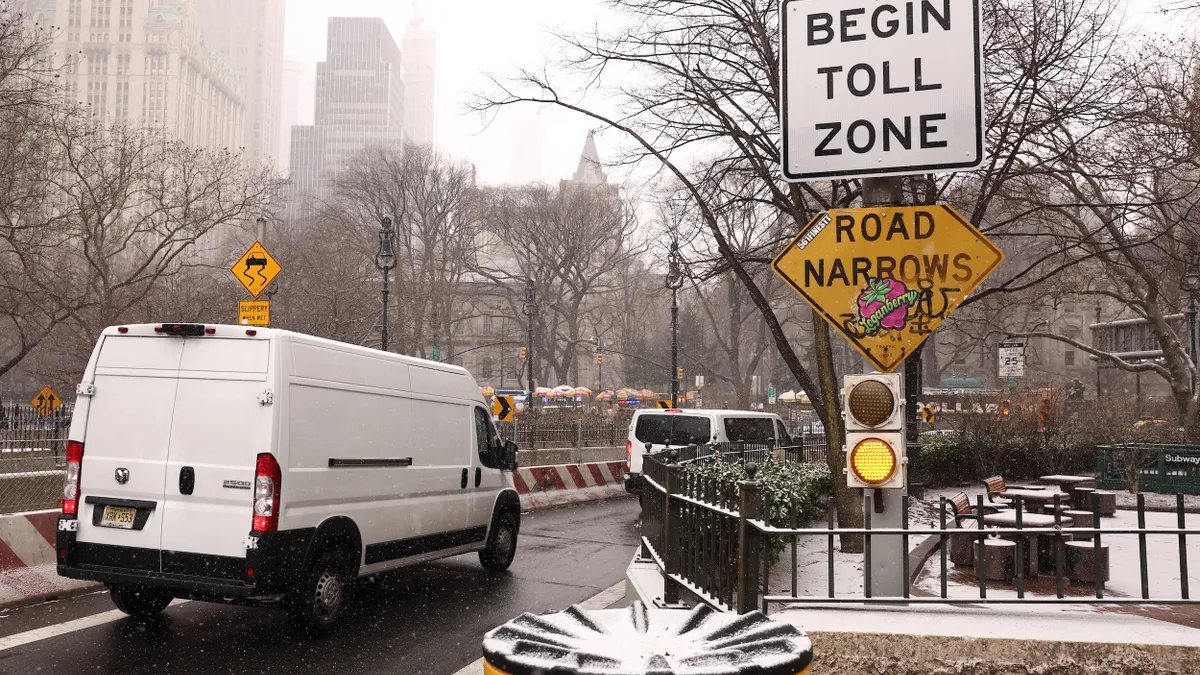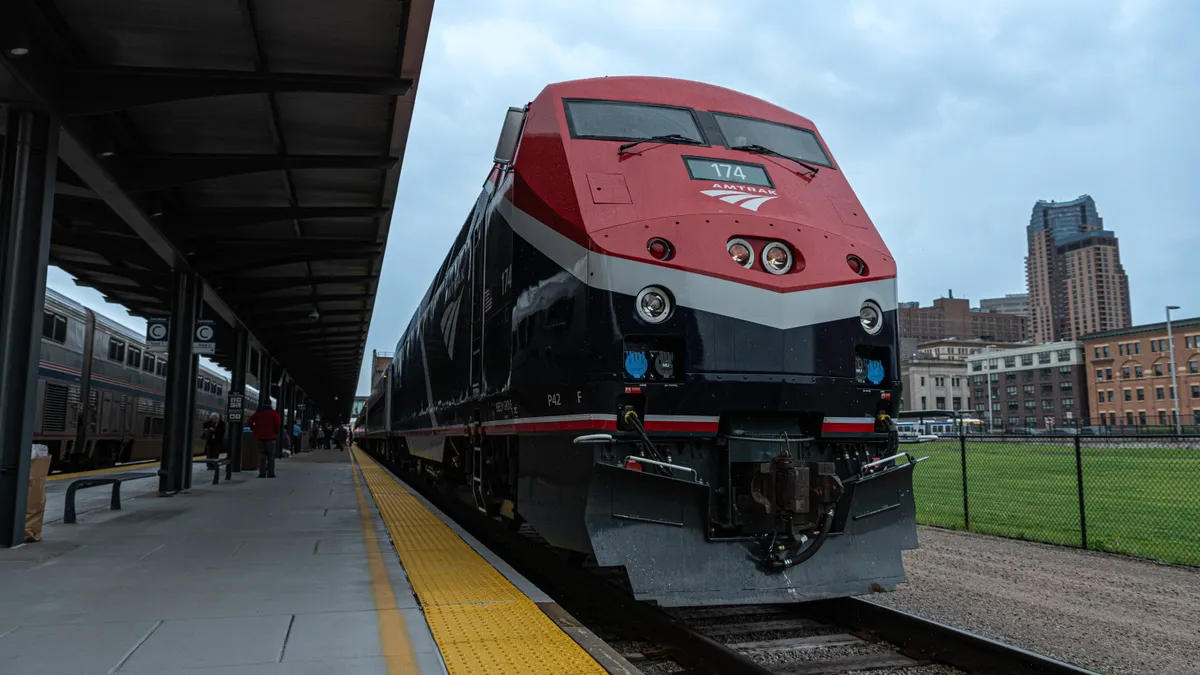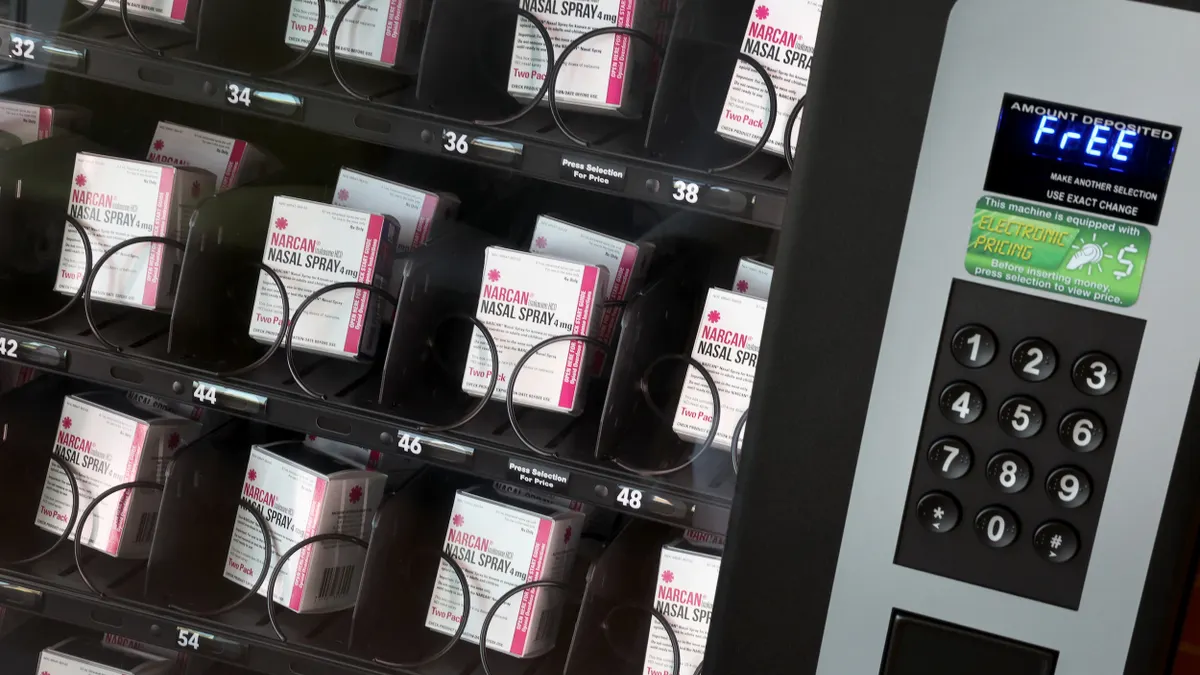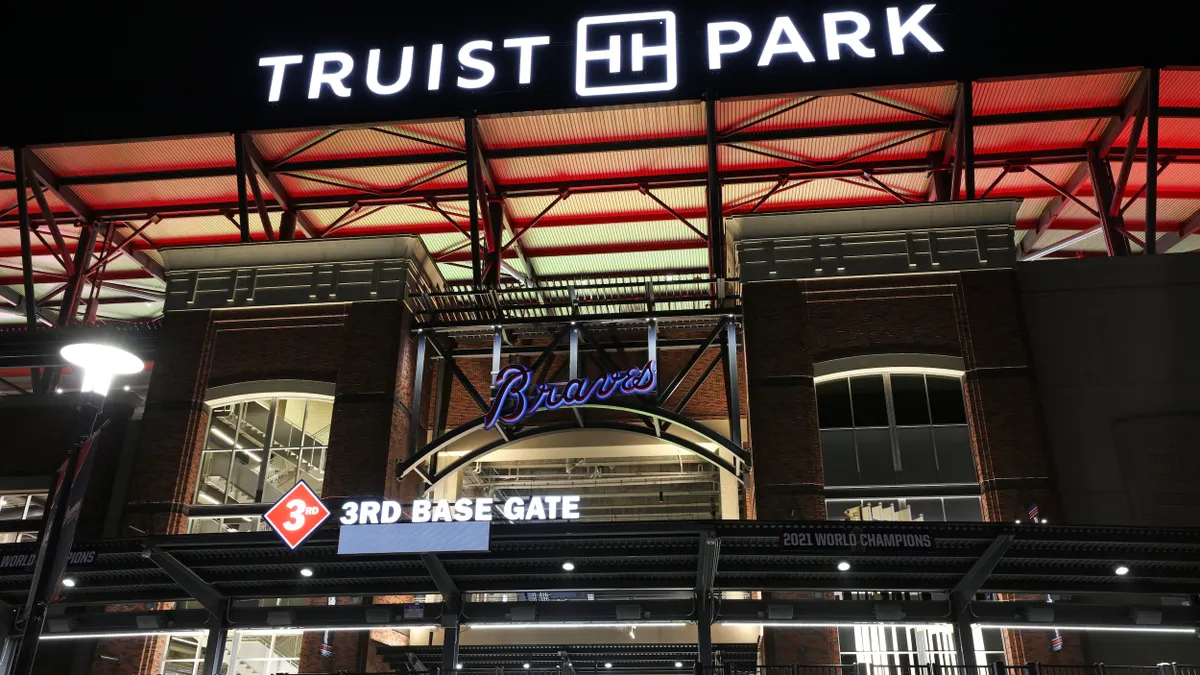Editor's note: This article was originally published in American City & County, which has merged with Smart Cities Dive to bring you expanded coverage of city innovation and local government. For the latest in smart city news, explore Smart Cities Dive or sign up for our newsletter.
Among the many annoyances that accompany the hustle and bustle of modern life, few generate more complaints than traffic congestion.
Beyond the time lost sitting in bumper-to-bumper traffic — which in 2024 cost the average American driver about 43 hours of time — congestion translates into billions of dollars annually in lost productivity, higher fuel consumption as vehicles idle or inch along, greater air pollution and health issues ranging from high blood pressure to strokes and heart attacks.
But even though traffic congestion has rebounded and, in many areas, surpassed pre-pandemic levels, help is on the way in the form of artificial intelligence (AI). Increasingly, transportation planners and engineers are recognizing that AI may hold the key to reducing traffic congestion and making highways run more smoothly and safely than ever thought possible. Moreover, by harnessing AI to optimize traffic flow and reduce congestion, cities worldwide are finding themselves in a far more advantageous position to create and maintain efficient and sustainable urban environments.
In Bellevue, Washington, for example, AI is being used to identify traffic hot spots by processing data on traffic volume, vehicle speeds and near-crash indicators from high-definition traffic cameras installed at 40 key intersections. In Denmark, AI is processing large volumes of traffic data to control traffic signal changes, including optimization of the need for more green time or wait times. Dubai, meanwhile, has adopted AI to systematically inspect the city’s roads for signs of deterioration.
AI use in traffic management
While AI developments in transportation management are occurring on numerous fronts, most AI-driven approaches in use today fall into four general categories:
Intelligent traffic systems. To predict traffic patterns and congestion hotspots and optimize traffic flow, AI algorithms can analyze vast amounts of data, comparing historical trends to current conditions and analyzing real-time data generated from sensors, traffic cameras and GPS devices. The insights gained from these analyses enable city planners and traffic managers to dynamically adjust traffic signal timings and/or reroute traffic to avoid blockages and stem congestion.
Over time, as more data is collected, smart systems can help cities adopt new guidelines for roadway design and traffic signal timing, reducing gridlock (and the emissions produced by idling vehicles) and improving traffic flow. Perhaps more importantly, because AI is capable of learning over time, traffic planners eventually will be able to shift from current traffic models, which only allow them to analyze operations and predict traffic patterns in relatively small areas, to models which consider a significantly larger footprint.
Traffic signal optimization. Traffic signals traditionally operate on fixed schedules which, in many cases, are no longer valid due to shifting traffic patterns. Inevitably, this can lead to needless delays and contribute to highway congestion.
In contrast, AI-powered traffic lights, which are already being used in cities like Pittsburgh and Los Angeles, can adapt in real-time to traffic volume. This enables signal timings to be optimized, reducing signal wait times as needed and ultimately improving traffic flow. AI will also help city planners to reduce traffic signal retiming — a process that typically takes place every 3-5 years in most cities — to as frequently as once a month.
The same traffic signal technology can be used to synchronize traffic signals to pedestrian signals. Again, depending on traffic volume, AI can give pedestrians a head start, enabling them to walk several seconds before the traffic signal turns green. Doing so greatly enhances safety, allowing pedestrians to be seen more readily and decreasing their chances of being hit by oncoming traffic.
Road condition monitoring. AAA estimates that pothole damage alone costs U.S. drivers $3 billion annually. On top of that, the Infrastructure Investment and Jobs Act (IIJA), which passed in November 2021, dedicated $273.2 billion to fix damaged US highways. The IIJA also increased highway funding by nearly 50% compared to previous reauthorizations, and since its passage, construction work has started on 207,000 miles of roadways.
While AI can’t make potholes go away, AI vision algorithms can identify road defects, assess the extent of road damage and notify relevant authorities about the issue in real-time. While AI is currently able to collect and process visual data about potential road damage, developments are in the works which will enable targeted repair and preventative maintenance without human involvement. Ultimately, this so-called automated pavement distress detection will speed up repairs, facilitate ongoing maintenance and improve highway safety.
Incident management. For some time, traffic cameras and sensors have provided the optimal means for tracking traffic movement in real-time and identifying incidents as they occur. The downside of video surveillance is that it can only be as effective as the humans who are monitoring multiple video screens at once which, frankly, is not always easy to do. Any delay on their part in reacting to a traffic incident potentially can hamper rapid response to the incident which, in turn, can lead to highway congestion.
Replacing human monitoring with AI-driven systems enables data from multiple traffic cameras and sensors (and even social media) to be scanned and analyzed simultaneously, ensuring incidents do not go unnoticed, speeding response time and minimizing the impact of such incidents on traffic flow. AI can also provide real-time traffic alerts, suggest alternate routes and even predict upcoming traffic problems.
Drawbacks of AI in transportation
While AI is proving to be an effective means for improving traffic management, it is not without its downside. Perhaps the greatest of these drawbacks is the significant upfront cost required to purchase the technology and train staff in its use. Integrating AI with existing transportation systems can also prove to be complex and time-consuming, while presenting potential scalability issues.
Beyond the cost in dollars and time to implement, AI-driven systems represent potentially vulnerable targets for cyberattacks. This can be largely offset through implementation of enhanced security measures, but again this can mean higher costs for jurisdictions that, in many cases, are already juggling limited resources.
Collecting and analyzing the vast amounts of data that AI-driven systems require can also raise both data privacy issues and data quality issues. Jurisdictions relying on AI in transportation must take the necessary steps to protect sensitive information and comply with privacy regulations. They must also be aware of certain biases in the data that have the potential to lead to inaccurate predictions of traffic patterns or potential hotspots.
Clearly, AI can have — and is already having — a significant positive impact on traffic management and the ability of jurisdictions nationwide to optimize traffic flow, reduce traffic congestion and improve safety. What’s more, AI in transportation is only in its infancy. Developments in the technology and the way in which it can be deployed hold the key to creating more livable and sustainable urban environments.
The cautionary note, though, is that AI, like all technology, has its limitations and potentially can be compromised. As a result, jurisdictions need to consider AI with their eyes wide open. AI in transportation represents a game-changing technology that can vastly improve our lives and make traffic jams a distant memory, but it must be implemented in conjunction with the proper safeguards that will enable its full potential to be realized.
Commentary is a space for state and local government leaders to share best practices that provide value to their peers. Email Smart Cities Dive to submit a piece for consideration, and view past commentaries here.
About the Author
Wes Guckert, PTP, is president and CEO of The Traffic Group, a leading Service-Disabled Veteran-Owned Small Business (SDVOSB) traffic engineering and transportation planning firm serving clients nationally and internationally. He is also a fellow of ITE and on the National Small Business Leadership Council.



